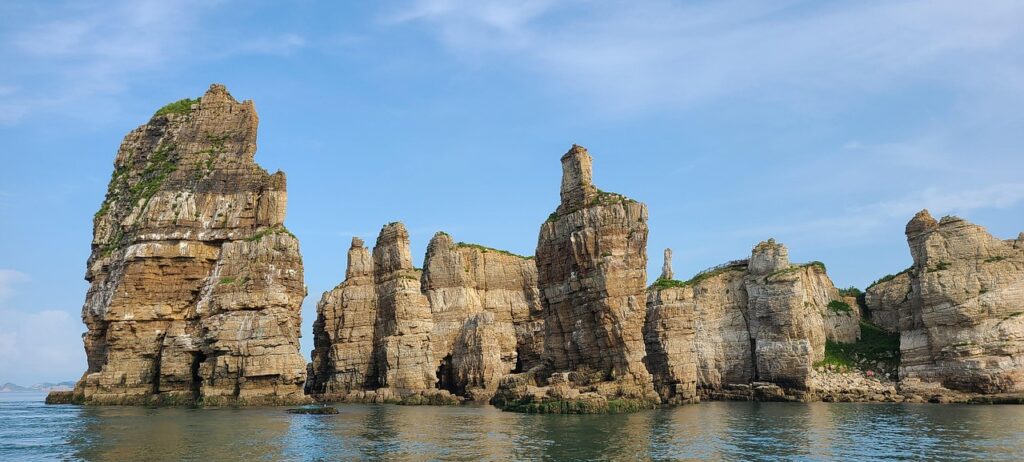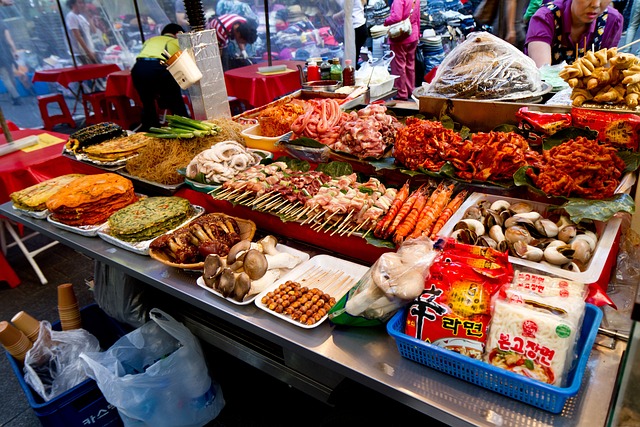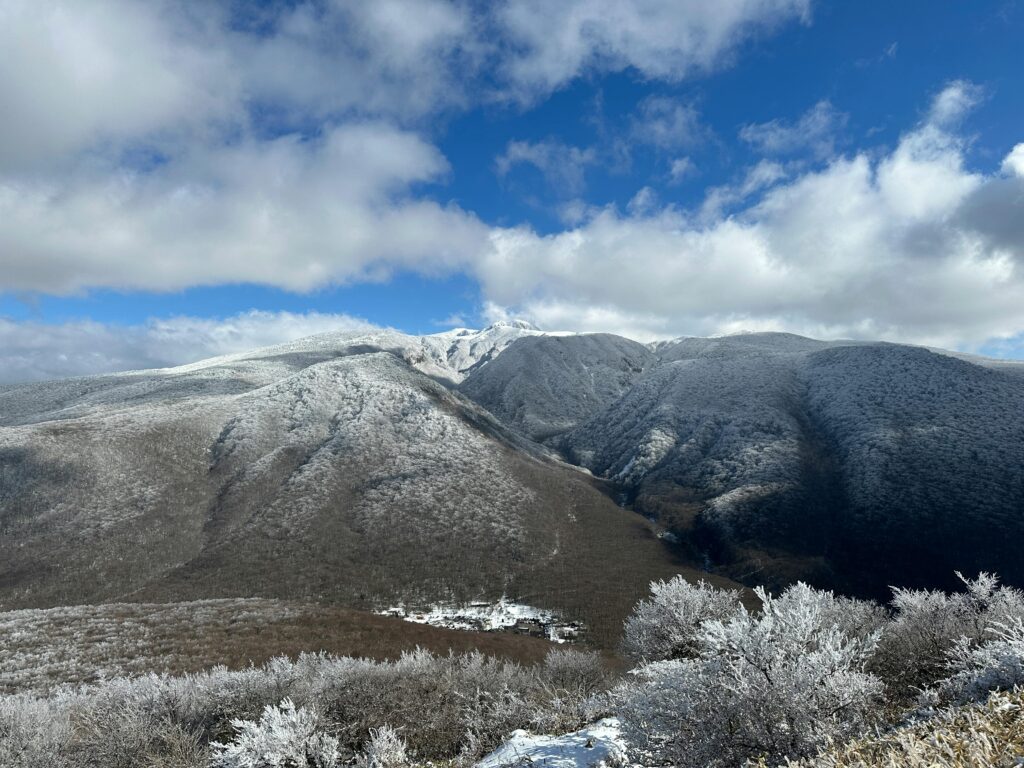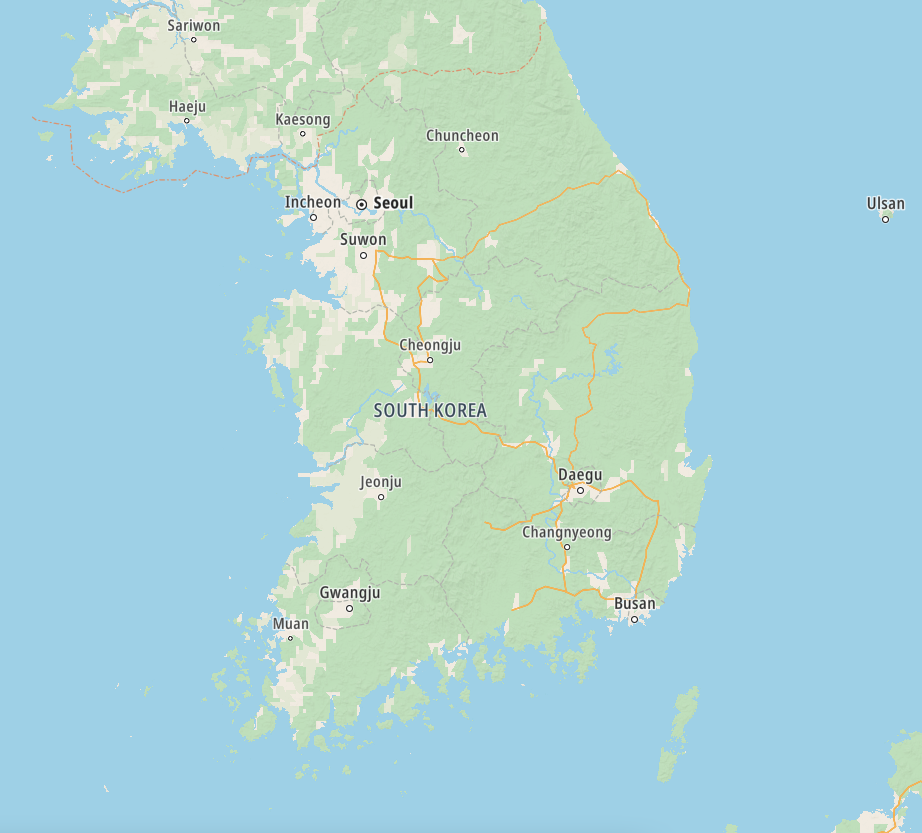South Korea / 대한민국 / Daehan Minguk – Let’s explore here

What’s it like in South Korea?
South Korea is a stunningly beautiful country in east Asia, on the southern part of the Korean peninsula. It’s about the size of Iceland, or slightly smaller than England, UK. There are over 3,000 islands off the cost to the west and south of the country. Most of the country is dominated by mountains, the highest point being the volcano Hallasan on Jeju Island, at 6,388 ft (1,947 m) above sea level.
It has a very long, rich and troubled history. Its only land border is with North Korea, separated by the Korean Demilitarized Zone.
The population of South Korea is around 52 million people (2024), with about half of them living in the metropolitan area capital city, Seoul, making it one of the most populous cities in the world.

A. bit about the history of South Korea
Ancient Korea
The history of Korea dates back to prehistoric times, with early evidence of human settlement dating as far back as the Lower Paleolithic period. The first historically recorded Korean kingdom was Gojoseon, founded around 2333 BC. This was followed by the rise of the Three Kingdoms of Korea: Goguryeo, Baekje, and Silla, which coexisted and frequently fought for dominance on the Korean Peninsula from the 1st century BC to the 7th century AD.
The Three Kingdoms Period
During the Three Kingdoms Period, the three kingdoms developed distinct cultures, languages, and political systems. Goguryeo was the largest and most powerful of the three, while Baekje and Silla were located in the southern parts of the peninsula. The kingdoms experienced frequent conflicts, with Silla eventually uniting the peninsula under its rule in 668 AD after defeating Baekje and Goguryeo with help from Tang China.
Unified Silla and Goryeo Dynasties
The Unified Silla period (668-935 AD) marked a period of relative peace and prosperity. Silla established a centralised government, built major cultural and architectural achievements, and saw the spread of Buddhism throughout the region. However, by the 9th century, internal strife weakened the Silla kingdom.
In 935, the Goryeo dynasty was founded by Wang Geon, which ruled from 918 to 1392. The Goryeo dynasty succeeded Silla, and its government continued many of the administrative practices established by Silla. It was during this time that the name ‘Korea’ was derived from the name of the dynasty. The Goryeo period is also known for the creation of the Tripitaka Koreana, one of the most complete collections of Buddhist scriptures in the world, and the invention of the movable metal type printing press.
Joseon Dynasty
The Joseon dynasty (1392-1897) was established by Yi Seong-gye, who became King Taejo. This period saw the rise of Confucianism as the dominant state ideology, which shaped Korean society, culture, and governance. The Joseon dynasty is considered one of the most influential periods in Korean history, during which the Korean language, Hangul, was created in the 15th century by King Sejong the Great. This era also saw cultural achievements such as the creation of Korean painting, ceramics and literature. The Joseon dynasty faced several invasions, including the Japanese invasions of the late 16th century (Imjin War) and the Manchu invasions in the 17th century. Despite these challenges, the dynasty remained in power until the late 19th century.
Japanese Colonial Period
Korea was annexed by Japan in 1910 after decades of increasing Japanese influence in the region. The Japanese colonial period (1910-1945) was marked by exploitation, suppression of Korean culture, and harsh control over the population. During this time, Japansought to integrate Korea into its empire, imposing Japanese language and culture while also exploiting Korea’s resources for Japan’sbenefit. Resistance to Japanese rule, such as the March 1st Movement in 1919, was met with violent repression. Korea remained under Japanese control until the end of World War II in 1945.
Division of Korea
After Japan’s defeat in World War II, Korea was liberated from Japanese rule. However, the peninsula was divided into two occupation zones along the 38th parallel by the Allies, with the Soviet Union taking control of the north and the United States taking control of the south. This division led to the creation of two separate Korean states: North Korea and South Korea.
The Korean War
aIn 1950, the Korean War broke out when North Korean forces, under Kim Il-sung, invaded South Korea. The United Nations, led by the United States, intervened on behalf of South Korea, while China and the Soviet Union supported North Korea. The war ended in 1953 with an armistice agreement, but no peace treaty was signed, leaving the two Koreas in a state of ongoing tension and division. The Korean War caused immense destruction and loss of life, with millions of people killed, wounded or displaced.
Post-War Development
After the war, South Korea faced immense challenges in rebuilding its economy and infrastructure. The country initially struggled with poverty, political instability and authoritarian rule. Under the leadership of President Syngman Rhee, South Korea became a republic, but the country also experienced several military coups and periods of martial law.
The Rise of Park Chung-hee
In 1961, General Park Chung-hee took control of South Korea through a military coup. Under Park’s leadership, South Korea began to rapidly industrialise, with a focus on heavy industry and export oriented growth. This period marked the beginning of South Korea’s transformation into a modern industrialised nation. While Park’s rule brought economic growth, it was also marked by political repression, including the suppression of opposition groups and the limitation of civil rights.
Democratisation Movement
By the late 1970s and early 1980s, calls for democracy grew, and South Korea saw widespread protests against the authoritarian government. The 1980 Gwangju Uprising, a violent crackdown on pro-democracy protesters in Gwangju, further fueled public discontent. After Park’s assassination in 1979, South Korea experienced further political instability, but the movement toward democratisation gained momentum. In 1987, after another round of protests, the government agreed to constitutional reforms that led to the direct election of the president, ending the military led rule.
Economic Growth and Globalisation
By the 1990s, South Korea had become one of the world’s leading economies. The country’s rapid economic growth, often referred to as the ‘Miracle on the Han River’, transformed South Korea into a global powerhouse in industries such as electronics, automobiles and shipbuilding. Companies like Samsung, Hyundai and LG became internationally recognised brands. South Korea also embraced globalisation, becoming a member of the World Trade Organization (WTO) and forming stronger economic ties with other nations.
Recent History and Challenges
In the 21st century, South Korea continued to grow both economically and politically. The country emerged as a democracy with regular free elections and a vibrant political system. However, South Korea also faced significant challenges, including tensions with North Korea over its nuclear weapons program, frequent protests over political issues, and debates about the role of the US military presence in the country.
South Korea has also become a global cultural leader, with the rise of the Korean Wave (Hallyu), which includes the spread of Korean pop culture, music (K-pop), movies and television shows around the world. South Korean culture has had a significant impact on global entertainment and media.
Relations with North Korea
The relationship between South Korea and North Korea has fluctuated over the years. Periods of tension and conflict have been punctuated by attempts at reconciliation and engagement. Notable moments include the summits between South Korean presidents and North Korean leaders, as well as the inter-Korean agreements aimed at improving relations. However, North Korea’s nuclear weapons program remains a central issue in South Korea’s foreign policy.
The Korean Demilitarized Zone
After the Korean War, the Korean Demilitarised Zone (DMZ) was established along the 38th parallel as a buffer zone between North and South Korea. The DMZ remains one of the most heavily militarised borders in the world. Despite the armistice, tensions between the two Koreas persist, and both sides continue to maintain large military forces along the border.

South Korea road trip
We haven’t finished our planning for our road trip through South Korea yet. When we do though, we’ll post it here, and in the blog.
Hopefully our journey will improve our knowledge of this intriguing and beautiful country, and enable us to meet some interesting people. We’ll be updating this page at that time – don’t forget to check back 🙂
Map of South Korea

What’s it like to drive in South Korea?
They drive on the right hand side of the road in South Korea. Roads are generally in good condition, and driving standards are also good.
Do you require an international driving permit in South Korea?
We’ve created a dedicated page to driving abroad, which answers this question, and more, which you might find helpful.
Can you use your UK driving license when driving through South Korea?
We’ve created a dedicated page to driving abroad, which answers this question, and more, which you might find helpful.
Do I need a carnet de passages to drive in South Korea?
We’ve created a dedicated page to driving abroad, which answers this question, and more, which you might find helpful.
What currency do they use in South Korea?
In South Korea they use the South Korean won. Cash is widely used. The use of credit / debit cards is widely accepted in cities, although not guaranteed elsewhere. Travellers cheques are not readily accepted. There are many ATMs in cities and towns throughout the country, although some will not work for foreign-issued cards.
You should make yourself aware of the amount that your bank charges you for using credit and debit cards abroad. Often credit cards are cheaper for purchasing items directly, and for withdrawing cash from ATMs.
What language do they speak in South Korea?
They speak Korean in South Korea. Japanese is also spoken by older generations, and English is widely spoken by younger generations.
What time zone is South Korea in?
Remember, when you’re planning your next trip to take a look at what time zone it’s in.
Do I need a visa to visit South Korea?
We’ve created a dedicated, more comprehensive page on visas, which you should find helpful. Check it out!
Is wild camping legal in South Korea?
Yes, wild camping is fine in South Korea.
What plug / socket type do they use in South Korea?
In South Korea they use plug / socket types C and F.


Health issues in South Korea
Is it safe to drink water in South Korea?
Yes, it is safe to drink tap water in South Korea. Bottled water is also readily available throughout the country.
What vaccinations are required for South Korea?
This NHS website is kept up to date with all relevant information on vaccinations in South Korea.
Phones in South Korea
What is the country calling code for South Korea?
The country calling code for South Korea is +82
What are the emergency phone numbers in South Korea?
- The emergency number for police in South Korea is: 112
- In South Korea, the emergency number for ambulance is: 119
- The emergency number for fire in South Korea is: 119
If you’ve got some useful info that you’d like to share, let us know!
And don’t forget to check out all the other pictures!
